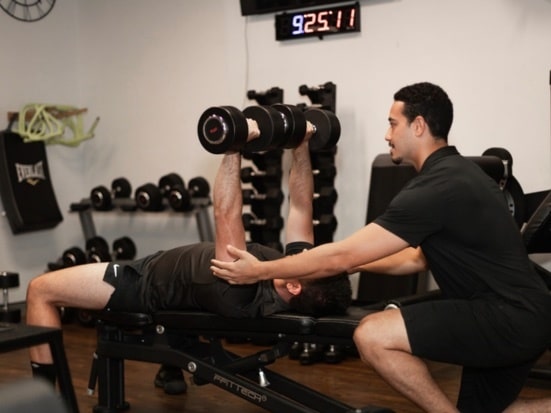Tag: brisbane physio
20
Jul
Chronic pain? How to manage it
What is chronic pain Chronic pain involves persistent pain that lasts for over 6 months, or symptoms that last longer than expected. In Australia, chronic pain is on the rise with doctors reporting 67% more cases over the past 10 years. In 2018 it was also reported that chronic pain cost our health system 139 billion. If you have chronic
13
Jul
Osteoarthritis? What you should do about it now
If you have been diagnosed with osteoarthritis (OA), you may have also been told to lose weight to help manage the disease. When you walk hundreds or even thousands of steps per day, carrying excess weight can add up. What does the research say? A recent study looked at roughly 10000 knees without OA and 6000 knees with OA over a
8
Jun
Wrist pain? You may have De Quervain’s synovitis..
So what is it? De Quervain’s Tenosynovitis (DT) is an inflammation of the tendons around your thumb and wrist. The inflammation of the tendon coverings can often cause you pain and functional impairment in activities involving gripping and lifting. Often the pain is very sharp and can cause obstruction to many day to day activities. Who commonly gets it? It
30
Mar
5 ways to stay injury free this festive season
1. Don’t overdo social sports We probably all know someone that came off second best during backyard cricket or park soccer once upon a time. It is important to know your limits. If you haven’t bowled a cricket ball since the last festive period, it’s fair to say you aren’t Elyse Perry. Make sure to enjoy yourself but take it
18
Jan
Should I tape or brace my painful ankle?
So like you know, hurting your ankle is frustrating and quite limiting. You may be wondering what you can do to help it and you have probably thought about giving your ankle some support. The question then is, what support should you use? What do i need to consider? Taping and bracing are quite different for a number of reasons
3
Jan
5 ways to make 2023 your physical best
1 . Create a sustainable routine A year isn’t a sprint, it’s a marathon so you need to prepare yourself for one. A routine can be very useful to enhance your health by creating more structure in your life. For example, most elite sports teams have their training and playing rosters given to them a year in advance so that
28
Oct
I’m injured, should i use ice now?
Picture this scenario – you have just rolled your ankle, tweaked a muscle or strained your back. What do you do next? Do you go for the frozen peas or ice pack and place it on your injury site? Read on to understand why this may be a bad idea. Where did icing injuries come from? Icing injuries has been
14
Oct
I have a frozen shoulder, what should i do now?
Frozen shoulder is condition whereby the joint stiffens for a long period of time and movement can be largely limited. Often the reason for this is unknown. Unfortunately, if you have this condition, you may experience symptoms for up to 12-36 months. Read below to hear more about management strategies. 1. Get an early assessment This is very important for
21
Sep
3 reasons why your shoulder isn’t improving
1: You have poor shoulder movement Do you struggle reaching towards your cupboards? Do you have difficulty reaching behind your back? Do you have shoulder pain when trying to comb your hair? If you answered yes to any of these questions you may have limited shoulder flexibility. Our shoulder joint is one of the most flexible joints in the body
19
Sep
3 reasons why you are getting injured running
1. You aren’t tracking your running time Do you keep a log of your running schedule? If not you probably should. If you are someone that fluctuates your running time largely week to week, you should probably think again about that.. If you are like most people, you don’t like change and neither do our muscles and joints. Our bodies










